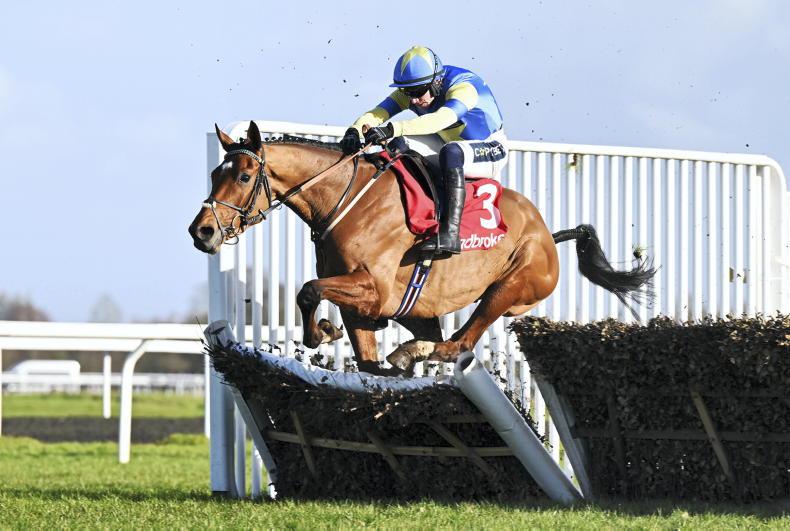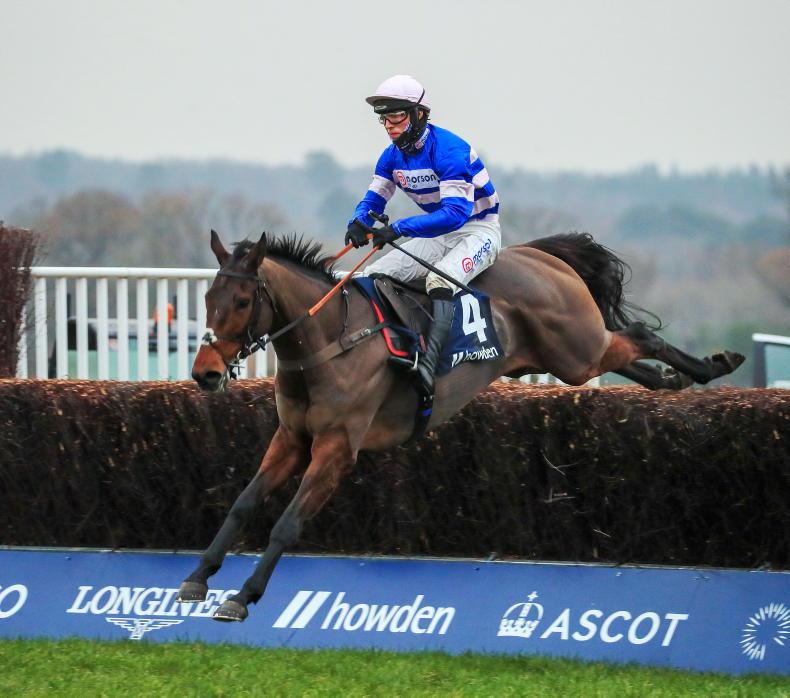IF there is one horse to keep on side as we head into autumn, it is Continuous who won the Group 3 Shoda Market Café Royal Whip Stakes at the Curragh.
He made his seasonal reappearance in the Hardwicke at Royal Ascot where he finished fifth to Isle Of Jura and seemed to be badly in need of the run. That run had clearly brought him forward as he landed this Group 3 displaying a smart turn of foot for a horse who is effective over much further than this 10-furlong trip.
This race was run at an even tempo with the last four furlongs rated as fast. It essentially turned into a test of speed over half a mile, resulting in Continuous recording a Finishing Speed Percentage of 109.20% meaning that he was 9.20% faster in the final three furlongs compared to the previous seven.
This fast finish meant that the overall time of 2m 4.09secs was a fast one and is indicative of Continuous being every bit as good as he was last year when winning the St Leger and finishing a slightly unlucky fifth in the Arc at ParisLongchamp.
The speed he showed here was impressive for a St Leger winner over this 10-furlong trip. His final four-furlong splits are detailed below, and they can be rated as being fast as against the Race IQ par.
Continuous- final four-furlong splits:
F7: 11.61secs
F8: 11.22secs
F9: 10.98secs
F10: 11.88secs
That ninth furlong was where he mastered the runner-up Trustyourinstinct recording 10.98secs and in so doing was the only horse in the race to dip under 11.00secs. This was a remarkable burst of speed for a horse thought to be a stayer.
His top speed of 41.19mph through that furlong showed him to be much sharper than on his debut at Ascot where he reached a top speed of 38.12mph. Not only was this a massive improvement from his return to action, but the top speed also that he reached here was faster than he ran when winning the Great Voltigeur and the St Leger last season.
It is entirely plausible that we are dealing with an improved performer who is versatile as regards trip, but the speed he showed here suggests he will be best at up to a mile and a half and not beyond.
Analysis of the RaceiQ stride data reveals that he is not a long string galloper so often associated with a stayer. In fact, he has a short stride but has a high cadence.
He has a short quick action associated with fast horses and horses who can quicken sharply by increasing their cadence as opposed to lengthening their stride.
The data shows us that he had the shortest average stride length in the race, but the highest cadence represented by strides per second. The details are below.
Average stride length:
1. Continuous: 6.93 metres
2. Trustyourinstinct: 7.12 metres
3. Caught U Looking: 7.23 metres
4. Crypto Force: 7.09 metres
5. Bright Stripes: 7.22 metres
6. Villanova Queen: 7.25 metres
Average Cadence: (Displayed as strides
per second)
1. Continuous: 2.34 s/sec
2. Trustyourinstinct: 2.27 s/sec
3. Caught U Looking: 2.25 s/sec
4. Crypto Force: 2.27 s/sec
5. Bright Stripes: 2.23 s/sec
6. Villanova Queen: 2.23 s/sec
He is clearly a fast horse who is versatile as regards trip. His speed should win him a Group 1 this year. It is no surprise he is entered in the Champion Stakes at Ascot over 10 furlongs in October, but he may go back up in trip now. The Breeders’ Cup Turf on fast ground strikes me as an ideal spot for him.
hat-trick of Group 3 wins
ON just her second start of the season this Dermot Weld-trained filly recorded a third Group 3 of her career and did well to win given the sedate tempo of this race.
Last season she won the Stanerra Stakes over 14 furlongs in July at Leopardstown and the Irish St Leger Trial over the same trip at the Curragh in August. Back at 12 furlongs on this occasion she saw off Mother Nature in game fashion.
Shamida recorded an FSP of 111.92%, a fast finish courtesy of her being able to save plenty of energy due to the slow early gallop. She was helped by a smart ride from Chris Hayes. He was aware of the steady pace and made a move with three furlongs to go quickening to the front with the fastest furlong in the race 10.77secs (42.00mph).
This move proved to be decisive, and even though Mother Nature (second) was marginally quicker than Shamida through the final two furlongs, she could not reduce the advantage that Chris Hayes had pinched from three to two out.
Shamida had also coped well with a steady tempo when winning at Leopardstown last year, evidence of her versatility, but she is crying out for a strong gallop at a mile and a half plus.
In contrast to Continuous, she has a long stride. She recorded an average stride length of 7.35 metres, the longest in the field and her cadence of 2.14 strides per second was the lowest.
That she could win here is testament to her raw ability and there is more to come from this filly who will be fresher than most going into the latter part of the season, and she is sure to be placed to maximum effect by Dermot Weld.
THE RaceiQ data that I have showcased in this column to shed light on how races are run and what horses have achieved, can now benefit from Par Sectionals.
They serve to compare the sectionals achieved by a horse in any individual furlong against the optimal sectional time for the course and the trip that they are running over.
The Par sectionals are derived from looking at the sectional times that have been achieved in the past, by horses winning races in fast times over the course and distance. How fast a horse has run in every furlong in a race, is compared with the par and expressed through the following thresholds.
1. Very Slow
2. Slow
3. Par
4. Fast
5. Very Fast

This serves to simplify analysis in that we now have sectional times for individual furlongs which can be rated according to the thresholds. Below is an example from the Lennox Stakes at the Qatar Goodwood Festival which was won by Audience who was able to dictate a slow/very slowpar/fast tempo.
Individual Sectionals Lennox Stakes – Audience
F1: 15.32secs (Slow)
F2: 12.64secs (Very Slow)
F3: 11.72secs (Par)
F4: 11.00secs (Par)
F5: 10.60secs (Fast)
F6: 10.86secs (Fast)
F7: 11.76secs (Fast)
Info
The assessment of sectionals against Par now means that more sense can be made of the numbers both for those already familiar with them, and those who are new to the concept.




 This is a subscriber-only article
This is a subscriber-only article
 It looks like you're browsing in private mode
It looks like you're browsing in private mode











SHARING OPTIONS: